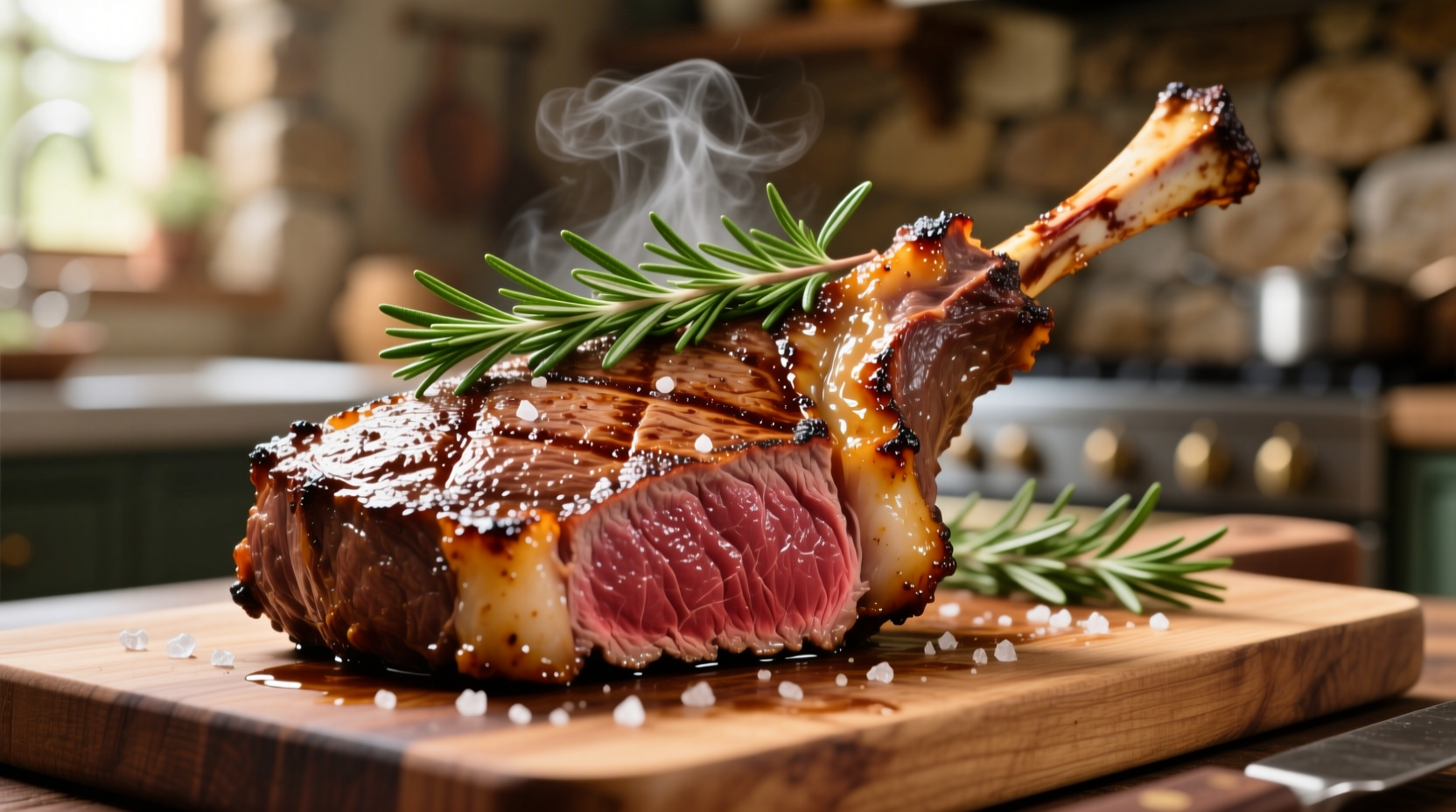Mastering lamb leg steaks requires understanding this versatile cut's unique qualities and applying precise cooking techniques. Unlike tougher cuts that need slow cooking, leg steaks respond beautifully to quick, high-heat methods that develop flavor through the Maillard reaction while preserving their delicate texture. As a professional chef with extensive experience teaching home cooks, I've refined this approach through thousands of kitchen demonstrations to ensure consistent results regardless of your cooking equipment.
Why Lamb Leg Steaks Deserve Your Attention
Lamb leg steaks offer an exceptional balance of flavor and tenderness that makes them ideal for weeknight dinners with gourmet results. Cut from the upper leg portion, these steaks contain just enough marbling to stay moist during cooking without overwhelming richness. Their relatively uniform thickness (typically 1-1.5 inches) allows for even cooking compared to irregular cuts like shoulder chops.
According to the USDA Food Safety and Inspection Service, lamb should reach a minimum internal temperature of 145°F (63°C) for medium-rare doneness, measured with a food thermometer in the thickest part. This temperature ensures food safety while preserving optimal juiciness - significantly lower than the 160°F once mistakenly recommended for all meats.
| Doneness Level | Internal Temperature | Visual Characteristics | Resting Time |
|---|---|---|---|
| Rare | 120-125°F (49-52°C) | Bright red center, very soft | 3-4 minutes |
| Medium-rare | 130-135°F (54-57°C) | Warm red center, slightly springy | 5 minutes |
| Medium | 140-145°F (60-63°C) | Pink center, firm but yielding | 6 minutes |
| Medium-well | 150-155°F (66-68°C) | Slightly pink center, quite firm | 7 minutes |
Essential Preparation Steps for Success
Proper preparation separates good results from exceptional ones. Begin by removing your steaks from the refrigerator 45-60 minutes before cooking - this critical step ensures even cooking throughout. Cold meat placed directly in a hot pan will cook unevenly, with the exterior overcooking before the center reaches proper temperature.
Season simply but effectively: pat steaks completely dry with paper towels (moisture prevents proper browning), then apply kosher salt and freshly ground black pepper. For enhanced flavor development, consider adding these professional touches:
- Rub with 1 teaspoon olive oil per steak to promote browning
- Add minced garlic and fresh rosemary during the last 2 minutes of cooking
- Finish with a pat of compound butter for extra richness

The Precision Cooking Process
Follow this professional technique for restaurant-quality results at home:
- Preheat your heaviest skillet (cast iron preferred) over medium-high heat for 5 minutes until hot
- Add 1 tablespoon high-smoke point oil (avocado or grapeseed) and swirl to coat
- Place steaks in skillet, ensuring they don't touch (cook in batches if necessary)
- Sear undisturbed for 3-4 minutes until a deep brown crust forms
- Flip and cook for another 3-4 minutes for medium-rare (adjust for thickness)
- Add aromatics (garlic, herbs) during the last 2 minutes of cooking
- Transfer to cutting board and rest for 5 minutes before serving
This method works because the high initial heat creates the flavorful crust through the Maillard reaction, while the relatively short cooking time prevents overcooking. The resting period allows juices to redistribute throughout the meat - cutting too soon releases precious moisture onto your cutting board.
Adapting to Your Equipment and Preferences
While the stovetop method delivers excellent results, these adaptations maintain quality across different cooking scenarios:
Grill method: Preheat to 450°F, oil grates thoroughly, and cook 4-5 minutes per side with lid closed. The USDA notes that grilling creates desirable flavor compounds while allowing excess fat to drip away from the meat.
Oven finish method: For thicker steaks (over 1.5 inches), sear on stove then transfer to 400°F oven for 5-8 minutes until reaching desired temperature. This prevents an overcooked exterior while ensuring proper internal temperature.
Common mistake alert: Avoid pressing down on steaks with your spatula - this squeezes out precious juices and prevents proper crust formation. Trust the process and let the meat develop its natural sear.
Serving Suggestions That Elevate Your Dish
Pair your perfectly cooked lamb with complementary flavors that enhance rather than compete:
- Classic pairing: Mint pesto with fresh lemon zest
- Seasonal option: Roasted asparagus with garlic and lemon
- Comfort food twist: Creamy polenta with roasted mushrooms
- Wine match: Medium-bodied red like Pinot Noir or Grenache
For food safety, always verify internal temperature with a reliable thermometer rather than relying on cooking time alone. The American Meat Science Association emphasizes that visual cues alone cannot accurately determine doneness, making thermometers essential for both safety and quality.
Troubleshooting Common Issues
Problem: Steaks sticking to the pan
Solution: Ensure your pan is properly preheated and the meat is completely dry before adding. Wait until a natural release occurs before attempting to flip.
Problem: Uneven cooking
Solution: Choose steaks of similar thickness, or use the "butterflying" technique on thicker portions to create more uniform thickness.
Problem: Over-browned exterior before reaching proper internal temperature
Solution: Reduce heat slightly and consider finishing in a moderate oven (350°F) to allow interior to catch up without burning the exterior.











 浙公网安备
33010002000092号
浙公网安备
33010002000092号 浙B2-20120091-4
浙B2-20120091-4